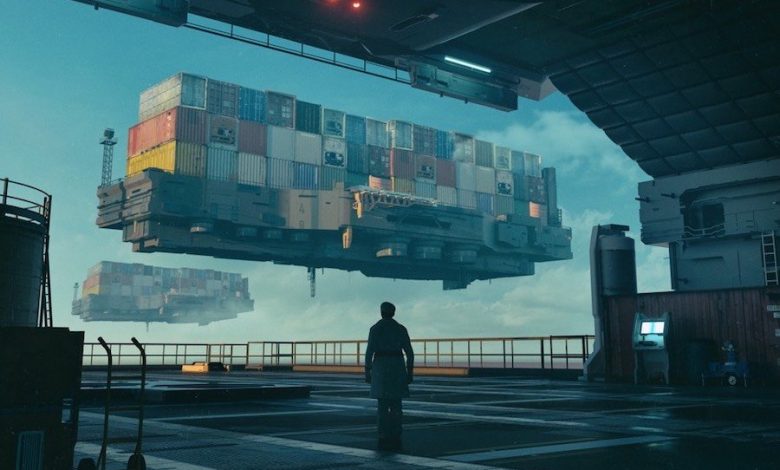When boxes will fly

Will the paradigm of moving containers change? Pedro Galveia from Yilport Iberia’s Global Logistics Center peers into the future.
During the last decade, the maritime industry has been looking at the future of the container transport industry, trying to see the possibility of the traditional supply chain service providers being significantly challenged, after many years of general cargo and the first decades of containerisation. Digitally enabled services are increasingly very fast and becoming more influential, to control the flow of goods from factory to consumer. An efficient containerised supply chain, acting like a conveyor belt from factory to consumer or a kind of Hyperloop could be one of the significant changes in the outlook.
It faces the old paradox of cargo owners and end-consumers enjoying lower costs, while all the stakeholders fight for control of some missing links on the supply chain, like the recent acquisition by DP World in the short sea shipping markets.
The container transport industry is facing an interesting period of incredible experimentation as different players try to find a winning formula to create value. From paperless solutions, to big data, IoT, automation, fleet control, cybersecurity, blockchain (only now Maersk and IBM reveal a pilot and open source solution to the market) to the new promised land, the digital twins. A cascading effect that starts with the scrap of recent ships, and reborn with the newbuildings with all these last concepts inside.
What are we creating now? Solutions based on trials, solutions based on industry needs, or technological innovations applied to the shipping industry that sometimes are only flirts, importing some concepts already tested in other industries? Tech companies try to sell solutions for shipping as they have sold them in the past for the bank sector and telcos.
While everyone is talking about digitalisation initiatives, some of them futuristic or abstract, they are all driven by a classic proposition: use technology to reduce cost and improve efficiency.
Using shipboard sensor data on pressure, vibration, temperature and many other factors, vessel operators now have the option of moving to condition-based (CBM) rather than calendar-based maintenance for their machinery. It’s possible nowadays to track cargoes with more accuracy and control than five years ago.
The digital twins are the new buzzwords. They could be used in manufacturing, energy, transportation and construction. Large, complex items such as aircraft engines, trains, offshore platforms and ships could be designed and tested digitally before being physically produced.
They create a bridge between the physical and the digital worlds, making it possible to optimise operations, detect issues, test settings, simulate scenarios and predict performance with improvements on efficiency and saving money. It enables data analysis and system monitoring to head off problems before they occur, prevent downtime, develop new opportunities and plan with simulations.
Even buildings, cities or ports can be digitally reproduced. To reach the goal of being the first port in the world to accept autonomous ships, Rotterdam is working to create a digital twin of the port. This would allow port managers to view and control the operations inside their environment and within the stakeholders. It provides a current picture of what is going on at the port, from the weather to how many ships are sailing about, their speed, and where they are headed, water depths and berth vacancies.
In 2016, Gartner named digital twins as one of its ‘Top 10 Strategic Technology Trends for 2017’”. A year later, Gartner once again named digital twins as a top trend for 2018, saying that with an estimated 21bn connected sensors and endpoints by 2020, digital twins will exist for billions of things in the near future.
Let’s wait for the next buzzword or concept, keeping in mind that since the beginning of containerisation, not so many things have actually changed in the process of moving containers from ship to shore and vice-versa. We can have twin or quad lifts, but we still need to have one of the busy areas to bypass, the apron. Maybe flying containers become part of the equation in the next decade.

as we enter the age of Nano technology, products get smaller and lighter – air freight also gets cheaper – don’t see much scope for growth of container shipping in the future.
Digitising container ship operations, and pooling data to visualise trends and efficiency gaps is now underway. I work in this field, and it is a very exciting time to be doing so – the possibilities are endless!
Hi Matthew — perhaps this is something you’d like to expand upon as a Contribution for Splash.